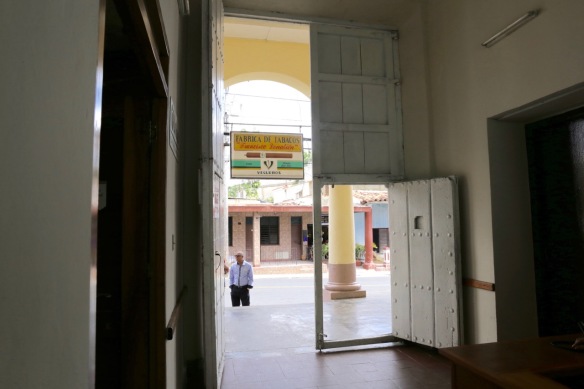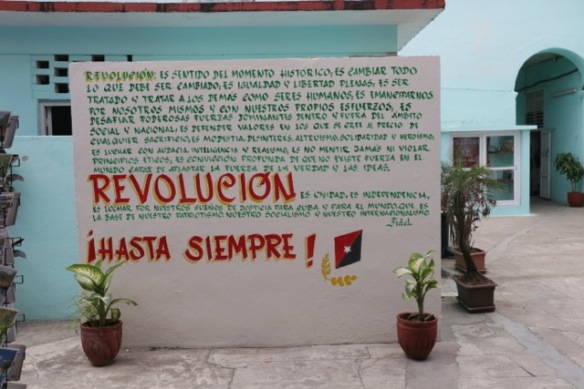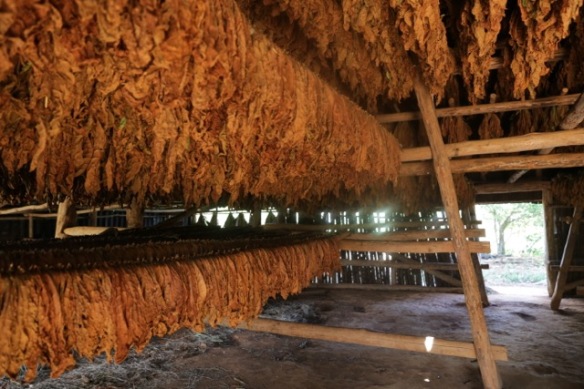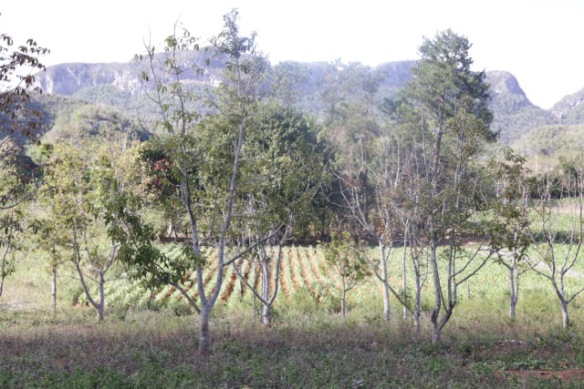Our earlier blog post mentioned our arrival in Viñales town. There, still on 6 March 2017, we saw this Cuban parrot. A pet, not a wild bird. This species lives only in Cuba, the Bahamas and Cayman islands. The pet trade did much damage to Cuban parrots; but recently, conservation measures seem to work and the numbers of wild parrots are increasing again.
Cuban martins, endemic to Cuba, flying around. A northern mockingbird on a wire.
The next day, 7 March, we went up a mountain trail in Viñales National Park. 7 March 2017 was our second full day in Cuba. And our second day in the Viñales region.
We heard a Cuban solitaire sing.
This is a video of a Cuban solitaire singing.
A Cuban trogon in a tree. Like the solitaire, an endemic species.
A termite nest.
This video is called A singing male Cuban Bullfinch (Melopyrrha nigra) at Cayo Coco, Cuba, on 13 April 2013.
This species lives around Viñales as well. We saw it this 7 March near the mountain trail.
Then, a yellow-headed warbler. And a white-crowned pigeon.
And a western spindalis, aka stripe-headed tanager.
Then, we continued to Pinar del Rio city. To a building which in the 1950s used to be a torture prison of dictator Batista. After the 1959 revolution, all political prisoners were freed. The building became a cigar factory which it still is today. It is open to the public.
In the factory hangs a poster of the late President Fidel Castro smoking a cigar. As he did. Later, he stopped smoking, as tobacco is not healthy, even though Cuban cigars do not cause as much damage as cigarettes.
Fidel Castro on why he stopped smoking: here.
In the factory courtyard, a quote by Fidel Castro.
Cuban cigars have the reputation of being the best in the world. We saw the workers make them by hand from three parts: filler, binder, and wrapper. 60% of this skilled work is done by women. At the factory entrance, a sign wished women well for International Women’s Day which would come next day, on 8 March.
House sparrows on the building.
In the afternoon, we went from the place where tobacco leaves turn into cigars to a place where tobacco leaves have their earlier stages.
First, we arrived at a lake. Smooth-billed anis. Great egret. Snowy egret. A little blue heron. And a belted kingfisher flying. And seven muscovy ducks: farm birds, not wild birds.
Then, we arrived at a tobacco farm. Like elsewhere in Pinar del Rio province, much tobacco grew there.
Under palm leaf roofs, harvested tobacco leaves fermented.
We were in La Jutia valley, named after the endemic mammal, the Cuban hutia.
A palm warbler on a wire near the farm.
As we walked on, mourning doves. A Cuban peewee.
We arrived at a lake. An artificial lake, made for firefighters to have water against wildfires. It attracted birds: brown pelicans. A little blue heron. An anhinga flying.
As we walked back, a female red-legged honeycreeper; and a northern parula.
Stay tuned for more on Cuban birds!







As we discussed – nice parrot! RH
LikeLike
Indeed! I hope they will continue to recover from illegal catching.
LikeLike
Pingback: Cuban kestrels and blackbirds | Dear Kitty. Some blog
Pingback: Cuban trogons and ovenbird | Dear Kitty. Some blog
Pingback: Cuban black-throated blue warblers and pygmy owl | Dear Kitty. Some blog
Pingback: Cuban mockingbirds, Zapata sparrow and frigatebirds | Dear Kitty. Some blog
Pingback: Cuban whistling ducks and Cuban emerald hummingbirds | Dear Kitty. Some blog
Pingback: Cuban flamingos, tricoloured heron and Ernest Hemingway | Dear Kitty. Some blog
Pingback: Cuban blue-winged teal and black-necked stilts | Dear Kitty. Some blog
Pingback: Donald Trump’s anti-Cuba escalation | Dear Kitty. Some blog
Pingback: Endangered Cuban crocodiles back in the wild | Dear Kitty. Some blog
Pingback: Smoking, from royal promotion to doctors’ objection | Dear Kitty. Some blog
LikeLike
Pingback: Sacked English Thomas Cook workers speak | Dear Kitty. Some blog
Pingback: Anhinga, osprey in Georgia, USA | Dear Kitty. Some blog